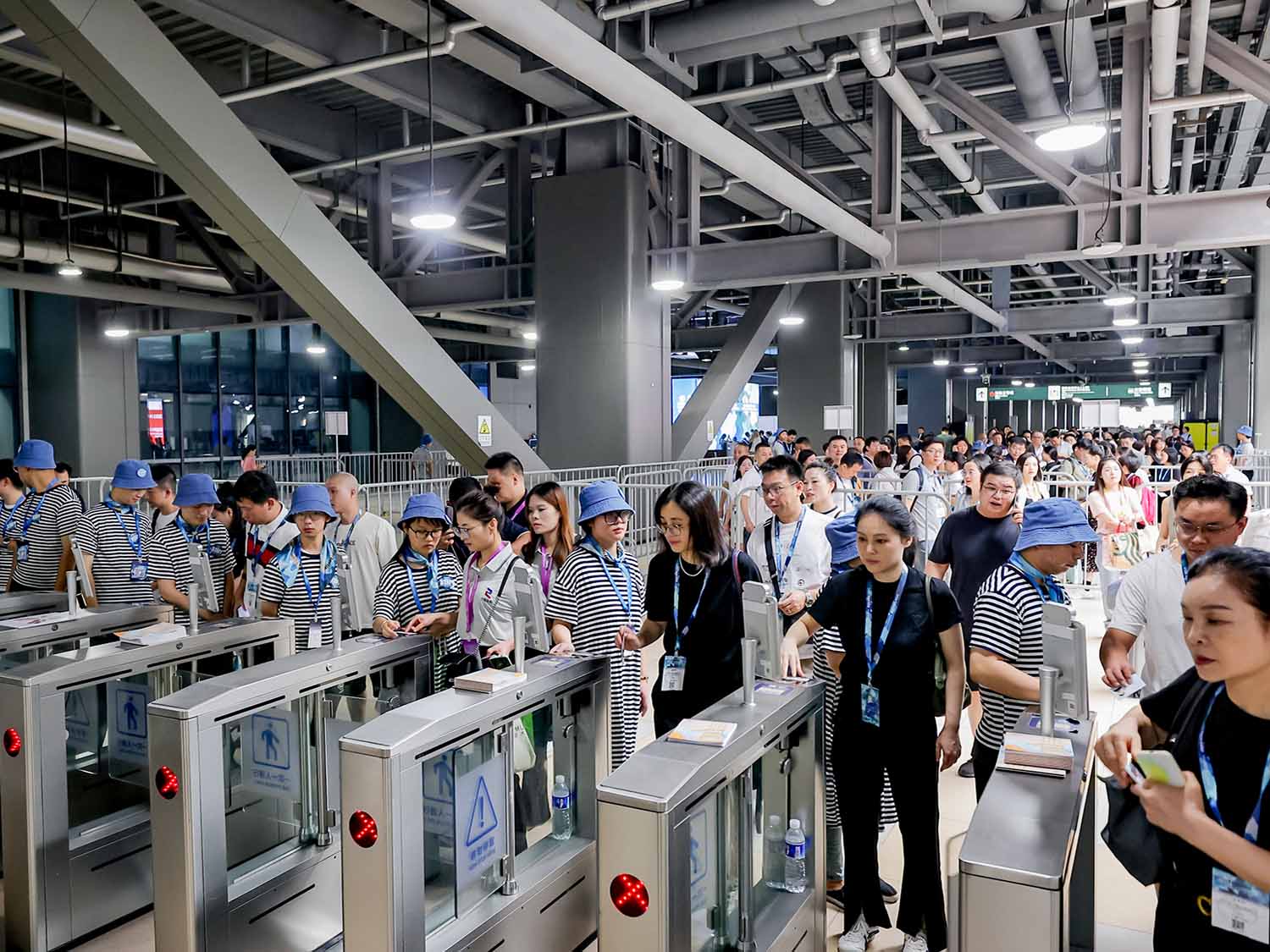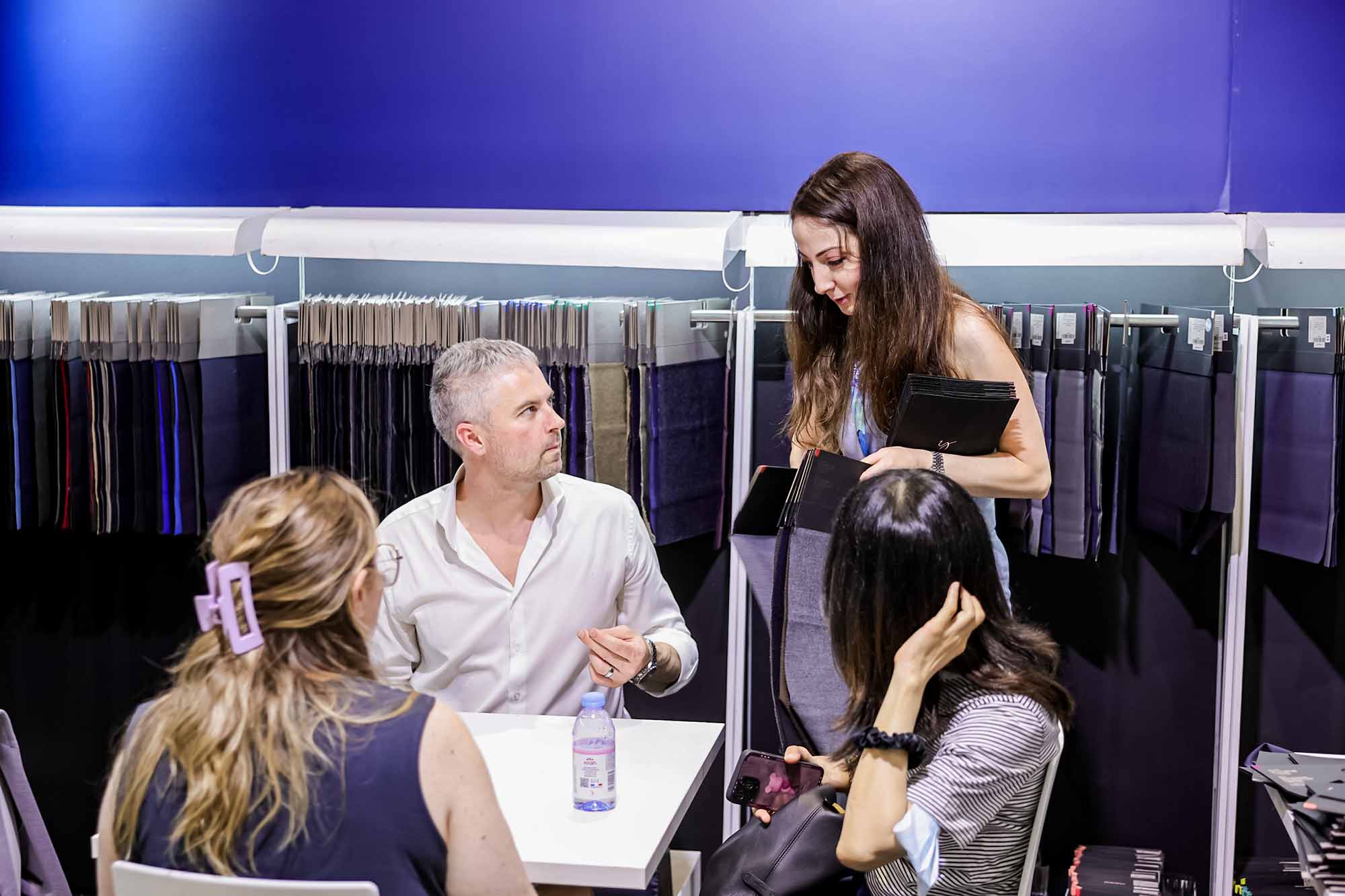
As the global textile and fashion industry intensifies its focus on eco-innovation, Messe Frankfurt (HK) Ltd delves into topics of sustainability and digitalisation in the textile industry.
With the global textile and fashion industry sharply focused on eco-innovation, Messe Frankfurt (HK) Ltd is putting the spotlight on sustainability and digitalisation. These critical themes will be central to the Intertextile Shanghai Apparel Fabrics - Autumn Edition, running from 2-4 September 2025, at the National Exhibition and Convention Center in Shanghai, China. Building on the success of the previous Autumn Edition, which drew nearly 4,000 exhibitors from 26 countries and regions and over 100,000 visitors from 115 countries, similar strong figures are anticipated for the upcoming show.
As a comprehensive platform where so many different materials or innovations can be found, industry players know they can use the fairground to reconnect with old friends and meet new business partners.
The fashion sector accounts for approximately 10% of global carbon emissions annually, achieving decarbonisation targets remains a pressing challenge throughout the entire textile supply chain. Although many fashion companies have pledged to reach net zero greenhouse gas emissions by 2050, sustainable transformation is complex.
As such, the Intertextile Apparel tradeshow has served, and continues to act, as a catalyst for industry evolution, where key players can stay informed on the latest trends, technological advancements and regulatory developments.
Looking at the current climate, international business often changes. For example, the US tariffs is the latest shift that suppliers need to navigate. Intertextile Shanghai Apparel Fabrics - Autumn Edition is one of the largest textile fairs in the industry. It serves as an informative platform for companies to connect with new customers, suppliers and industry experts, to share ideas and discuss current trends, foster innovation and exchange both domestically and internationally.
The show has four main pillars, namely fashion fabrics and accessories, functionality, sustainability, and textile future. Within that framework there is space for players across the industry.
Sustainability and circularity
The greatest challenge facing the textile industry is how to become more sustainable and move towards circularity. Brands and manufacturers have been growing increasingly aware of fashion’s impact and with sustainability laws tightening are accelerating efforts.
A key initiative at Intertextile Shanghai Apparel Fabrics - Autumn Edition is the Econogy Hub, a rebrand of the fair’s All About Sustainability Zone, and the Innovation & Digital Solutions Zone, which have been launched with related fringe event categories.
The Econogy Hub fosters dialogue and provides a specialised platform for sustainable product and service suppliers. The name combines economy and ecology amplifying its predecessor’s mission. Following its successful debut with nearly 40 exhibitors at the previous Autumn Edition in 2024, industry leaders such as Bureau Veritas Group, ECOCERT, Hohenstein, Global Organic Textile Standard (GOTS), IDFL Laboratory and Institute, and TESTEX have already confirmed their return to the zone.
Additionally, bluesign technologies ag (Switzerland), Control Union World Group (the Netherlands), and Itochu Corporation (Japan) will make their Econogy Hub debuts, joining an impressive array of international exhibitors.
This year, the hub will provide a dynamic exhibition and seminar space, including sustainable textile suppliers and certifiers, and integrates independent verification tools such as the Econogy Check. Exhibitors who pass the Check are integrated into a streamlined verified directory called the Econogy Finder.
This evolution reflects Intertextile’s commitment to showcase sustainability and accelerate traceable, industry-wide progress. With the increasing demand for green, ethically produced textiles, the fair’s reputation and the introduction of the Econogy Hub are drawing more buyers who are actively seeking sustainable partners.
Exhibiting in 2024, Gunjan Tarika, country head of Birla Cellulose, said: “Over the years sustainability has become crucial. Most of the buyers want sustainable products, that’s the key thing. Apart from being competitive in price and quality, buyers are also looking into products which are measurable in their environmental impact, such as carbon reduction and water conservation.”
Digital solutions and the use of Artificial Intelligence
The Innovation & Digital Solutions Zone meanwhile has been launched in response to rapid advancements in artificial intelligence (AI), blockchain, and Internet of Things (IoT) redefining supply chains, enhancing traceability, slashing waste through 3D virtual sampling, and optimising logistics via predictive analytics.
Technological innovation within the textile industry is progressing at a steady rate. As it is advancing it is increasing the number of players in this section. The rise of generative and predictive AI, for example, is proving to be a huge leap forward for all sectors, with textiles and apparel no exception.
However, this comes with its own set of challenges and opportunities, with industry players needing to adapt and stay ahead.
Launched in 2024, the zone highlights the industry’s swift embrace of technology to enhance efficiency and innovation. The evolution to the Innovation & Digital Solutions Zone will see it encompass a wider scope of products and the integration of a Digital Innovation Exploration Space.
At the Autumn Edition companies showcasing innovations will include the likes of AiDLab, HKRITA and Shima Seiki. Such innovations as AI-driven knitting machinery, AI-assisted product inspection, AI-integrated design, digital design systems software solutions that streamline production processes will be on display.
By bridging physical and digital realms, Intertextile Apparel empowers fairgoers to adopt smart manufacturing, agile supply chains, and data-driven decision-making, which are essential strategies for remaining competitive in a rapidly evolving global market.
What else to expect from Intertextile Apparel
Intertextile Shanghai Apparel Fabrics - Autumn Edition highlights the importance of the growing Asian textile market. China is continuously solidifying its position as a key sourcing and manufacturing hub for the global textile industry. This could be attributed to the region’s economic expansion and appetite for advanced materials.
As such, the tradeshow is a key driver for growth in the textile industry, and exhibiting this autumn is a huge opportunity for businesses to unlock global markets, says Wendy Wen, managing director, Messe Frankfurt (HK) Ltd.
“Supported by our ability to attract key buyers and our strategic business matching services, suppliers can gain direct exposure to high-profile potential customers, including curated delegations from key markets such as China, India and Vietnam,” Wen adds.
Regularly attracting around 4,000 exhibitors from all over the world, the show and its concurrent fairs give buyers access to the entire textile value chain, from fibres to finished garments. As one of the world’s biggest textile trade fairs, it showcases an extensive portfolio of products. The show also enhances the sourcing experience through a range of fringe events, discussing market insights, fashion trends, sustainability and innovation, helping buyers navigate the evolving industry landscape.
Wen concludes: “Intertextile Apparel is more than just a trade fair. It’s a gateway to innovation, partnerships, and long-term success, positioning businesses at the forefront of the industry’s evolution.”
Have your say. Join the conversation and follow us on LinkedIn




